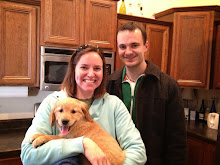The last part of a paint job, if doing a basecoat/clearcoat system, is spraying the clear coat. This is what separates the boys from the men, where the car comes out looking like a show car or a dud. For the task, I used SPI's Universal Clear, a high solids show-caliber clear, and probably one of the best for the purpose one can get.
The clear should go on the base very soon, usually within 24 hr or whatever the tech sheet states. Alternatively one could use an intercoat clear, which goes on over the basecoat, and then is scuffed when the clear coat is ready to be applied. However, there is one secret even the paint reps won't tell you (they're actually instructed not to tell), and that is--as long as the car is not removed from the booth so the base is exposed to UV and contaminants--SOME bases can sit indefinitely before the clear goes on, but it all comes down to the polyall used in the base. I really exploited this as my car sat in base for several weeks. I'm writing this here for my own archival purposes...for anyone else, just pretend you didn't read that last part. Thinking of using that cheap, economy line base coat? Situations like this is where you'd run into problems.
I sprayed about a gallon and a quart kit of clear on the entire car, over 3 coats. This came to 2.5 sprayed gallons. I was using slow to medium activator for the clear, which is mixed 1:1. I had ordered the slow as I was thinking I would be doing the clear in much warmer weather, however the slow is still ideal for most temp ranges. If faced with two different speeds of an activator or reducer to use in the same job, always spray the fastest one first. The temp when spraying was in the 60's, letting 30 minutes of flash between coats.
I used an LPH400 with silver cap to spray, gun settings were 28 psi, fluid backed out 2.25 turns, and fan about 90%. I mixed up 1.5 quarts at time to spray (not all of it is poured into the gun at once) so I could spray almost continually without having to stop to fill up more. The decklid was removed and set aside so I could clear the trunk jam; the decklid will be cleared later. The headlight buckets had also been removed so I could get better coverage on them with base, and they will be cleared separately also.
The adage goes spray it how you want it to look. Well I wanted the car to look really wet. I was also afraid of dry spray so was more willing to push it to a run in order to assure it wasn't dry enough. These are called 'flow meters.' Well my flow was working very well, and I got some pretty horrific runs on the passenger's door right under the top C body line, which will be a devil to run out. It was technique that created this run as I went over it too many times trying to get coverage. I'll have to deal with these when the time comes. I had runs in other places too, but every painter gets runs, in fact the pro's expect at least several. They are a lot easier to fix than dry spray. With that being said, I do have some areas that also went on dry, or that I almost missed altogether, such as front and center of the hood. I may have to reclear the hood.
One other thing...the car should be tacked off very well several times before spraying clear, but never after the first coat goes on. Now onto the pics.
Saturday, October 19, 2013
Subscribe to:
Post Comments (Atom)









Do you have any full body pics of pics of the painted scoop?
ReplyDeleteI do Billy. I just haven't got to it yet. The scoop is all buffed out and actually assembled on the car now (with scoop grille). I'm getting pretty behind in the blog.
DeleteGreat post! I really appreciate the step-by-step breakdown of the clear coat spraying process—super helpful for beginners and seasoned DIYers alike. Your attention to detail, especially regarding prep work and environmental conditions, really stands out. Working in a proper automotive spray booth makes a huge difference in achieving that flawless finish, and your explanation highlights why. Looking forward to more paint-related tips!
ReplyDelete